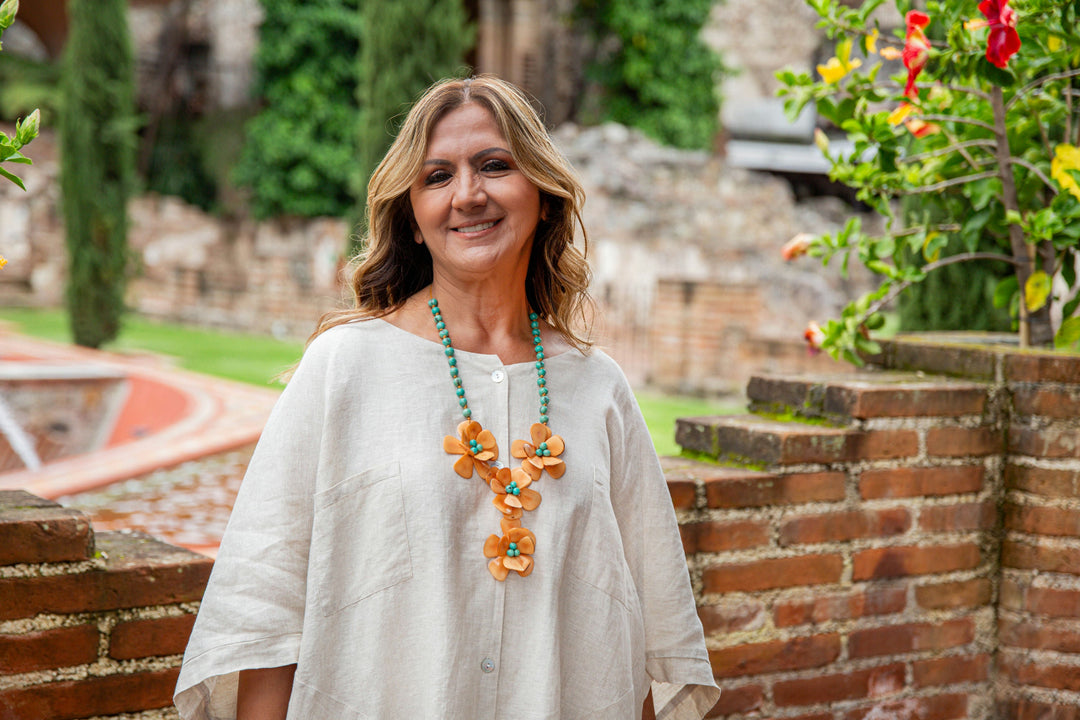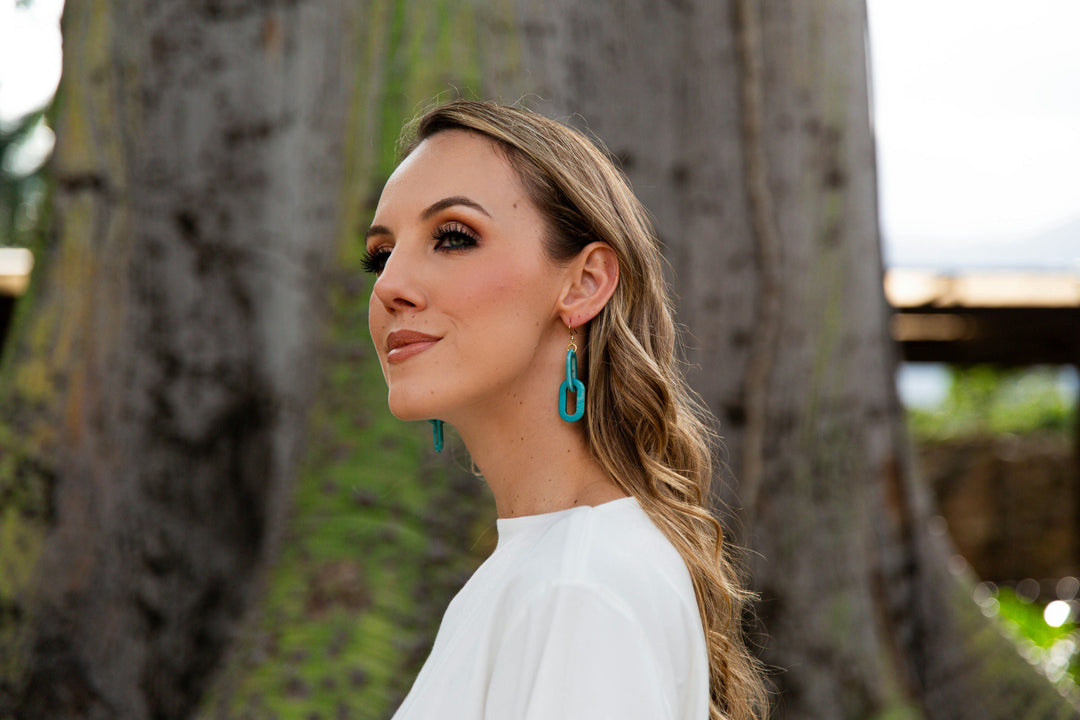The Environmental Benefits of Choosing Eco-Friendly Jewelry Options
The jewelry industry has long been associated with luxury, status, and craftsmanship. However, behind the sparkle and beauty, many traditional jewelry-making processes have significant environmental and ethical costs. From destructive mining practices to excessive carbon emissions, conventional jewelry production often contributes to environmental degradation.
Fortunately, the rise of eco-friendly jewelry provides a more sustainable alternative. Consumers are becoming increasingly aware of their environmental impact, leading them to seek out brands that prioritize ethical sourcing, sustainable materials, and responsible craftsmanship.
At Tagua by Soraya Cedeno, we believe in handmade, sustainable jewelry that supports both the environment and artisan communities. Our jewelry, crafted from the Tagua nut, offers a unique and eco-friendly alternative to traditional materials, aligning with the principles of sustainable fashion. In this article, we’ll explore the environmental benefits of choosing eco-friendly jewelry and how it contributes to a more sustainable future.
1. The Environmental Impact of Traditional Jewelry
Traditional jewelry-making often involves materials such as gold, silver, and gemstones, which require intensive mining. This process has severe consequences for the planet:
a. Deforestation and Habitat Destruction
Mining for precious metals and gemstones frequently leads to large-scale deforestation, disrupting ecosystems and endangering wildlife. Rainforests and other biodiverse areas are often cleared to make way for mining operations, leading to the loss of plant and animal species.
b. Water Pollution and Soil Degradation
Mining processes involve the use of toxic chemicals like mercury and cyanide, which can contaminate rivers and groundwater. This pollution affects local communities, agricultural lands, and marine life.
c. High Carbon Footprint
Extracting and refining precious metals and stones require large amounts of energy, often derived from fossil fuels. The carbon footprint of mining is significant, contributing to climate change and global warming.
d. Ethical Concerns
Beyond environmental concerns, traditional jewelry often involves unethical labor practices. Many mines operate under poor working conditions, with issues such as child labor, unfair wages, and unsafe environments.
2. What Makes Jewelry Eco-Friendly?
Eco-friendly jewelry is designed with sustainability in mind, ensuring that materials and production processes have minimal impact on the environment. The key factors that define sustainable jewelry include:
a. Sustainable Materials
Eco-friendly jewelry uses materials that are responsibly sourced, biodegradable, or recycled. These materials include:
-
Tagua Nut: A plant-based alternative to ivory, derived from palm trees in South America.
-
Recycled Metals: Gold, silver, and other metals that are repurposed to reduce mining waste.
-
Ethically Sourced Gemstones: Stones that are mined under fair trade and environmentally responsible conditions.
b. Low-Impact Production
Many handmade sustainable jewelry brands prioritize small-scale, artisanal production. This reduces industrial waste and energy consumption while supporting local communities.
c. Biodegradable and Natural Alternatives
Unlike synthetic materials, Tagua jewelry and other plant-based accessories naturally decompose, preventing plastic pollution.
d. Fair Trade and Ethical Sourcing
Supporting artisans and ensuring fair wages contribute to a more ethical supply chain, benefiting both people and the environment.
3. How Tagua Jewelry Supports Sustainable Fashion
a. What is Tagua Nut Jewelry?
Tagua nuts, often called “vegetable ivory,” grow on palm trees in South America. These nuts are harvested without harming the trees, making them a renewable resource. When dried, they develop a smooth, dense texture that closely resembles animal ivory—without the ethical and environmental consequences.
b. Why Tagua Jewelry is a Sustainable Choice
-
Tree-Friendly Harvesting: Unlike traditional ivory, which requires harming elephants, Tagua nuts are collected from palm trees that naturally shed them.
-
100% Biodegradable: Unlike plastic jewelry, Tagua jewelry breaks down naturally over time, reducing pollution.
-
Supports Artisan Communities: The production of handmade sustainable jewelry provides fair wages and economic stability for artisans in Ecuador and other regions.
-
Low Carbon Footprint: Unlike metal mining and gemstone extraction, the processing of Tagua nuts requires minimal energy, leading to fewer carbon emissions.
c. A Unique Addition to Travel Retail and Boutique Jewelry Collections
Tagua jewelry is becoming a favorite among boutique jewelry brands and travel retail stores because of its lightweight, natural appeal, and sustainability. As conscious consumerism grows, travelers and fashion-forward individuals are seeking pieces that reflect their values while remaining stylish and versatile.
4. Scientific and Environmental Benefits of Choosing Eco-Friendly Jewelry
Choosing eco-friendly jewelry doesn’t just look good—it actively benefits the environment. Several studies highlight the advantages of sustainable materials and ethical production:
a. Reduction of Carbon Emissions
A study published in the journal Environmental Science & Technology found that recycling metals (such as gold and silver) can reduce carbon emissions by up to 99% compared to newly mined metals. Since Tagua nut jewelry requires no mining at all, its carbon footprint is even lower.
b. Preventing Plastic Pollution
According to the United Nations Environment Programme (UNEP), over 300 million tons of plastic waste are produced every year. Choosing biodegradable, handmade, sustainable jewelry helps reduce dependency on synthetic materials and prevents plastic waste from entering landfills and oceans.
c. Preserving Biodiversity
A report by the World Wildlife Fund (WWF) emphasizes the importance of forest conservation in maintaining biodiversity. Since Tagua nuts come from healthy palm trees, their harvest supports sustainable forestry rather than deforestation.
5. How to Identify and Support Sustainable Jewelry Brands
If you’re looking to invest in eco-friendly jewelry, here are some key factors to consider:
a. Check the Materials
Look for brands that use natural, recycled, or ethically sourced materials, such as Tagua nuts, recycled metals, or fair-trade gemstones.
b. Research the Brand’s Ethical Practices
Sustainable brands should have transparency about their supply chain, fair trade practices, and environmental impact.
c. Choose Handmade and Artisanal Jewelry
Opt for artisan jewelry that supports local craftsmanship rather than mass-produced pieces that contribute to industrial waste.
d. Look for Certifications
Many sustainable brands carry certifications like Fair Trade, Rainforest Alliance, or Certified Sustainable Jewelry to verify their eco-friendly claims.
Make a Difference with Eco-Friendly Jewelry
Choosing eco-friendly jewelry is more than just a fashion statement—it’s a commitment to sustainability, ethical sourcing, and environmental preservation. By opting for handmade, sustainable jewelry like Tagua jewelry, you reduce your environmental impact while supporting artisans and fair trade practices.
At Tagua by Soraya Cedeno, we take pride in crafting boutique jewelry that aligns with the principles of sustainable fashion. Explore our collection and embrace eco-friendly jewelry that looks good and does good for the planet.
Discover our sustainable jewelry collection at Tagua by Soraya Cedeno.





